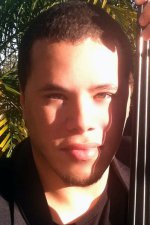
|
Using the iPad in Musical Performance: New Pathways




Abstract
The authors present a rationale for why a teacher might want to include opportunities for students to use the iPad as a musical instrument in general music settings as well as in small instrumental ensemble settings. They bring a high degree of practicality to the topic as two of the authors perform regularly both locally and nationally in an iPad ensemble, and the other authors use the iPad as an instrument in an innovative methods course at their university. Here the iPad is presented as another instrument that can be used in our music programs, one that is both versatile and engaging, one that can be used to check e-mail, order a pizza, complete a banking transaction, and most importantly play beautiful music. In the hands of artist teachers, the possibilities are endless. Using the iPad in Musical Performance: New Pathways Over the past four years, I (Randles) have served as a member of the musical performing group, Touch (see Table 1), which has performed in central Florida and around the United States. This performing group utilizes informal vernacular approaches to music learning that rely on aural discrimination, improvisation, and group arranging rather than performing standard repertoire from notation. Participation in this ensemble, and more importantly the vernacular methods we use, led to research projects that examine the impact of this new technology on peoples' musical lives. This research, much in line with the work of Green (2007), has resulted in an article on being an iPadist (Randles, 2013) and a book chapter on the use of the iPad as a mechanism for empowering students with special needs (Randles, in press) (see Table 2). From this work we see the power of music as a means for enhancing an individual's quality of life. The iPad is not LIKE a musical instrument, the iPad IS a musical instrument. Table 1 iPad Performance Examples - The Band "Touch" TEDx Tampa Bay 2013 News Segment 2013 (Tampa) Performance 2012 (Tampa) Collaboration with Dance (2012) Table 2 iPad as a Musical Instrument with Special Needs Students E-Minor Groove "Lean on Me"/"Hey Jude" Blues Improv Cosmovox Music for All We live in a world where we expect everything to be quick and easy. We can access food and shop for materials in an instant and travel great distances in no time at all. We receive data with ease, many times with a speedy mouse click. Our lives throttle by us so fast that sometimes we end up missing out on what truly makes us happy. The idea of doing what makes us happy and losing track of time is a beautiful one to ponder. When we are given any opportunity to do what we love, time wonderfully flies by; we get lost in the moment. Music is and certainly can be such an activity for all. As teachers, we can utilize new and emerging technologies in our future jobs as we share our joy of music with children in a culturally relevant way. As a teacher, I (Strouse) try to come up with new ways to get the idea of music making out to my students in a way that makes sense to them. My passion drives my desire to work with new ways of enjoying music. With the introduction of the iPad or any technology for producing music, we can get music out to the masses and plant that seed in their being. The idea that they too can express themselves through music or simply enjoy its company is paramount. Everyone is different and it is our jobs as teachers to not teach a subject, but rather teach students. We as educators can combine technology with our passion of teaching to start a revolution in public school music education, first by acknowledging that we can do things differently. A Technology Among Other Technologies Music is GOOD for ALL. However, only approximately 20 percent of students in secondary schools participate in music classes in the United States (Williams, 2012). Some of the most exciting work in music education right now involves working to increase this percentage through the use of digitally mediated pedagogy in smaller ensembles (O'Neill, in press). At the University of South Florida, where the first author teaches and where the other authors are students, there is a course sequence called Progressive Methods that incorporates the use of the iPad as a musical instrument, and a lab class where students perform using the iPad and other instruments. Here is a performance example of this in practice: The main point is that technology, all technology (keep in mind that the clarinet and the tuba are technologies), in the hands of artist teachers, can be used for musical good. New Pathways into Music Education Large ensembles are effective avenues for teaching students valuable life lessons such as collaboration and teamwork. They teach students that in order to produce beautiful music, everyone must put away their egos and embrace equality for the goal of producing one unified sound. With that said, there are limitations to what the model can offer. For example, most of the creative decisions are limited to only one person—the director. In addition, the traditional setting generally does not embrace the possibility of utilizing emerging technologies alongside standard instrumentation. Often, in order to be in an ensemble at the high school level a student must have prior experience reading notation and playing an instrument, thereby limiting their ability to enter music courses at the secondary level. These are some of the reasons why many students do not find it convenient or even possible to enroll in music classes. The large majority of students who are not enrolled in traditional music ensembles possess creative ingenuity and a hunger for artistic expression that may serve well in neglected areas of the music curriculum such as composition, improvisation, and songwriting. This desire to be creative could take shape in traditional ensembles where directors deem it "okay" to diverge from standard instrumentation to include the iPad in both small and large group performance. It could also mean that separate classes with a focus on composition become a part of school music offerings, where the iPad could be utilized along with all other instruments in the creation of new music. With all the possibilities the iPad offers (multiple music making applications and customizable interfaces), teachers can meet students where they are musically and extend their knowledge base through musically creative student-led projects. Here's to new pathways in music education! References
Green, L. (2007). How popular musicians learn. Burlington, VT: Ashgate Publishing.
O'Neill, S. (Ed.) (in press). Music and media infused lives: Music education in a digital
age. Canadian Music Educators Association.
Randles, C. (2013). Being an iPadist. General Music Today, 27(1), 48-51.
Randles, C. (in press). Opening doors: iPad musical creativity and the special needs
student. In S. O'Neill (Ed.), Music and media infused lives: Music education in a
digital age. Montreal, QC: CMEA.
Williams, D. B. (2012). The non-traditional music student in secondary schools of the
united states: Engaging non-participant students in creative music activities through
technology. Journal of Music, Technology, and Education, 4(2-3), 131-147.
Return to top |
|

